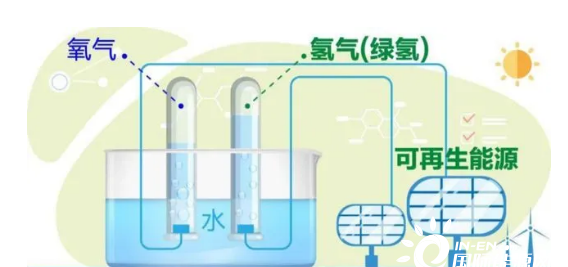The proportion of hydrogen production by electrolysis of water is expected to increase from the current 1% to 70% in 2050, and the market size may exceed 700 billion
Time:2022/2/14 14:24:32 Tag:Hydrogen production from water electrolysis, market size, photovoltaic, wind power
The "14th Five-Year Plan" clarifies the development direction and strategic goals of China's hydrogen energy, and the continued increase in the policy is expected to promote the continuous increase in the penetration rate of hydrogen energy. Looking back at the development history of new energy in China, we believe that the current time point for hydrogen energy is similar to the eve of the lithium battery outbreak in 2010. In the future, China is expected to continue to replicate the successful path of the lithium battery industry chain in the field of hydrogen energy and embark on a new path of clean energy revolution. steps.

As a clean and zero-carbon secondary energy, hydrogen energy plays an important role in the future energy transformation. The development of hydrogen energy has become an international consensus, which is of great significance for my country to achieve the "3060" dual-carbon goal.
At the beginning of 2021, hydrogen energy was officially included in the "14th Five-Year Plan", and the central and local governments at all levels frequently issued various policies related to hydrogen energy, which clarified the development plan and strategy of hydrogen energy during the "14th Five-Year Plan" period and in the longer term. Target.
At present, hydrogen production is mainly based on fossil fuel hydrogen production. Hydrogen production from water electrolysis is the future development direction. The key factor restricting the further improvement of the penetration rate of water electrolysis hydrogen production is the cost factor. The cost of electrolysis of water for hydrogen production is expected to be greatly reduced due to the substantial decrease in electrolysis system technology and the localization and scale of electrolyzer equipment costs. It is expected that the proportion of hydrogen production from water electrolysis is expected to increase from less than 1% at present to 70% in 2050, and the market size of electrolysis systems is expected to exceed 700 billion.
At present, hydrogen storage and transportation generally adopts high-pressure gaseous storage and transportation. Liquid hydrogen storage and transportation have obvious cost advantages in large-scale long-distance storage and transportation. The development of liquid hydrogen storage and transportation technology will continue to reduce the cost of liquid hydrogen storage and transportation. It will drop to 50% of the current level, and large-scale liquid hydrogen storage and transportation will be commercialized.
At present, the construction technology of hydrogen refueling stations in China is becoming mature, and localization has been realized. There are 141 hydrogen refueling stations in China. In 2050, the number of hydrogen refueling stations will reach 12,000, and the market scale will reach 100 billion yuan. Policy subsidies and the reduction in the cost of hydrogen refueling stations brought about by technological progress and scale effects are the key driving factors for increasing the penetration rate of hydrogen refueling stations.
At this stage, hydrogen fuel cell vehicles are in their infancy, mainly hydrogen fuel cell commercial vehicles, and hydrogen fuel cell passenger vehicles account for less than 0.1%. It is expected that the number of hydrogen fuel cell vehicles in China will increase from 7,352 in 2020 to 100,000 in 2025, and the compound annual growth rate is expected to reach 68%. The expected market size is expected to reach 80 billion yuan. The balance between the total cost of ownership (TCO) of the full life cycle cost of hydrogen fuel cell vehicles and the cost of competing products such as pure electric vehicles in the future is an important turning point for the increase of market penetration of hydrogen fuel cell vehicles in various segments; the issuance of policy subsidies Power will play a huge incentive role in the development of the vehicle market.